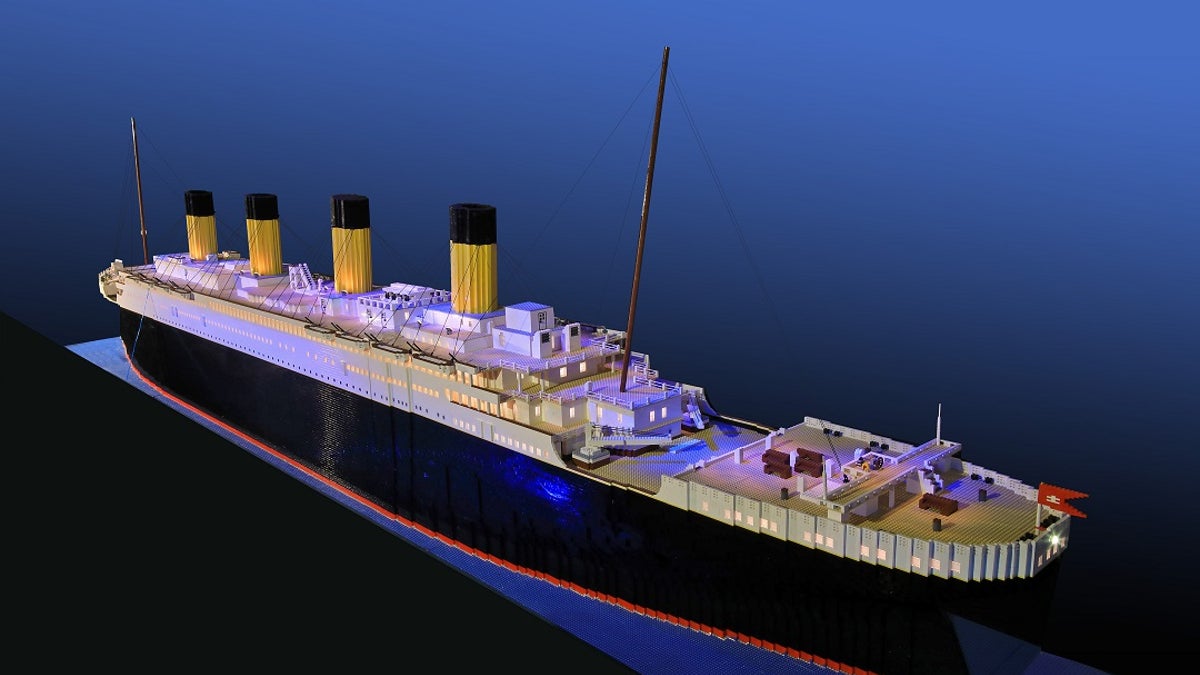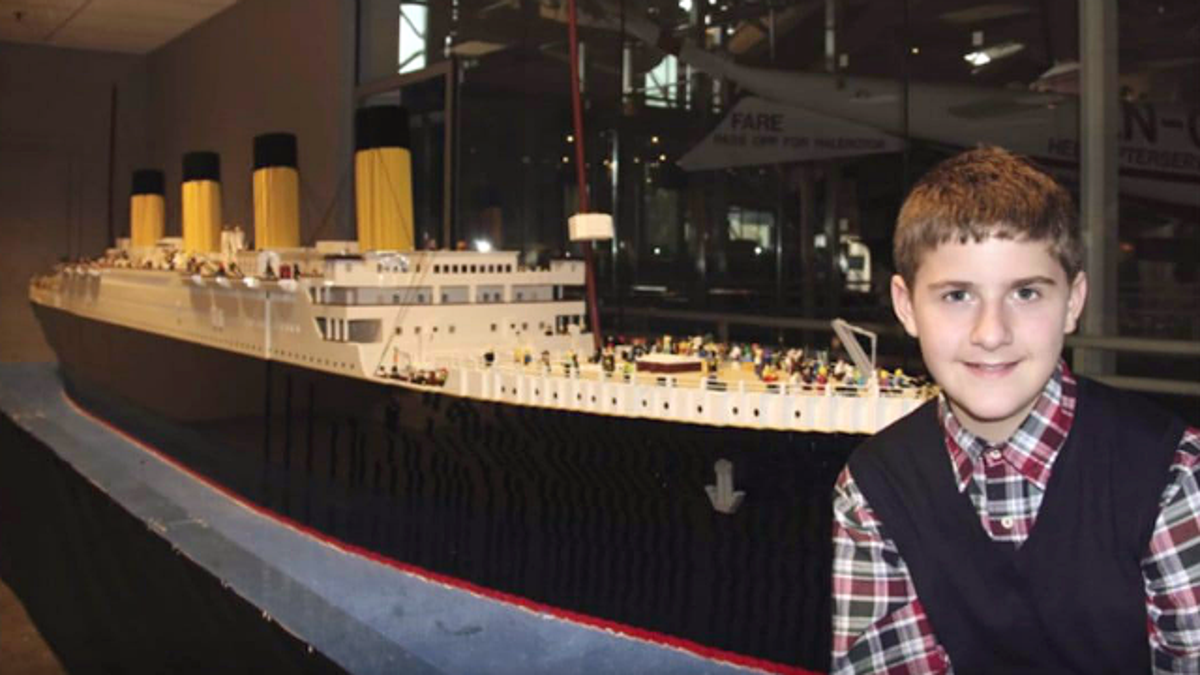
The Titanic replica took 11 months to complete. (Titanic Museum Pigeon Forge)
A now 15-year-old boy from Iceland used 56,000 Legos to build a replica of one of the world’s most famous ships: the Titanic.
Brynjar Karl Bigisson, from Reykjavik, the country’s capital, built the model when he was just 10 years old. It has since been on display in countries all over the world, including Germany, Sweden, Norway and beyond -- but can now be found at the Titanic Museum in Pigeon Forge, Tennessee.
At 26-feet-long, 5-feet-tall and 4-feet wide, the replica is the world's largest Titanic model built with Legos. It took Brynjar 11 months -- roughly 700 hours -- to complete the project, he told the museum.
The Titanic sank on April 15, 1912 while crossing the Atlantic from Western Europe to the U.S. Roughly 1,500 people out of the 2,240 on board died after the ship struck an iceberg.
The boy first started playing with Legos when he was 5, but it wasn’t until his mother took him to Legoland in Denmark that he started to think about making his very own Lego model.
"By the time I was 10, I started to think about building the Lego Titanic model in a Lego man size," Brynjar said. The teen told Fox News on Tuesday that he chose the Titanic because it is "very unique and the first ship I ever discovered."

Brynjar was just 10-years-old when he completed the replica. (Titanic Museum Pigeon Forge)
His grandfather, Ludvik Baldur Ögmundsson, scaled down the ship’s original blueprint to find out exactly how many Lego bricks he would need. His mother, Bjarney Sigrun Ludviksdottir, acted as his “coach and mentor."
“In the beginning when he started to ask me if I could help him, I wasn't taking him too seriously to tell you the truth,” Ludviksdottir told Fox News.
But Brynjar was insistent.
“I knew it was a crazy project, but I decided to go into the whole idea and then see what came out of it,” she said. “As months went by, amazing things were happening -- he began to shine.”
Brynjar added that family and friends donated money so he could buy all the Lego bricks needed for the project. Building the replica was no easy feat: the 15-year-old said he considered to “stop this crazy project” a few different times, especially after the ship’s stern collapsed twice.
Seeing his goal through has helped Brynjar in one particular aspect of his life: accepting his autism.
“I understand much better today that it’s not only the model that was the attraction, it was my story and how the whole process helped me out of the fog,” he told the museum.
Before he started the project, the 15-year-old had trouble with communication and social interactions. But as people began to ask questions about the replica, that all changed.
Ludviksdottir said that is was special for her when she noticed her son look people in the eyes, an aspect of communication he had trouble with prior to building the replica.
The teen’s grades have also gone up and his classmates began “seeing him as another kid, not just autistic," his mother said.
“I’m very thankful for it,” Brynjar said of the experience.
“Being Autistic can sound a bit scary because there is no cure or pill to fix it, but there are ways to become more functional. My story has given parents of autistic kids hope, that this diagnosis is not that terrible,” he told the museum.
His mother echoed this sentiment.
“I always say to parents who have kids with autism that it’s just a matter of training their weaknesses -- just like athletes,” Ludviksdottir added.
Brynjar said his Lego-building days are over; he hopes to become the captain of a ship one day.
“It has been so special for me,” the teen said. “It has helped me very much.”




















